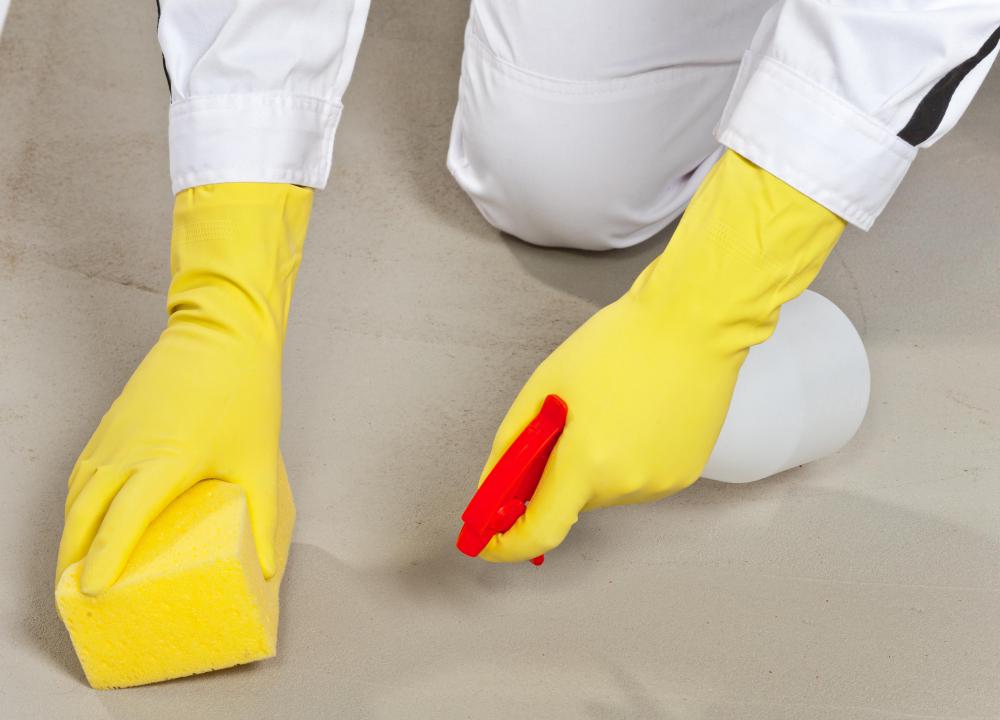At WiseGEEK, we're committed to delivering accurate, trustworthy information. Our expert-authored content is rigorously fact-checked and sourced from credible authorities. Discover how we uphold the highest standards in providing you with reliable knowledge.
What are the Best Methods for Waterproofing a Basement?
Waterproofing a basement is a task that should begin outside of a home. To minimize the chance that water will seep through the walls, eaves and downspouts should be in proper repair, and the soil surrounding the foundation should slope away from the house. Also, trees and shrubs should be planted a certain distance away from the building. Inside the basement, cracks should be repaired, and a concrete sealer can be applied to the walls and floor.
Eaves that overflow, leak, or are non-existent cause water to pour down from roof level. This water will often seep into the ground, then seep through cracks in basement walls. Before waterproofing a basement, eaves and downspouts should either be installed or repaired. Also, the rainwater that comes down the downspout should diverted away from the foundation of the building, at least 6 feet (1.83 meters).

The slope of the ground around the foundation of the building should also be investigated when waterproofing a basement. Ground that slopes toward the building can cause water to run down the slope and collect next to the foundation, possibly causing leaks in the basement. To correct this slope, fill should be used to create a slope that causes water to run away from the foundation.

The roots of trees and shrubs can also cause problems if they are planted too close to the house. Water that seeps into the ground can run down these roots and collect underground, next to the basement walls. From there, it can seep through the walls or cracks in the walls. Large roots can also possibly cause the walls to crack, making waterproofing a basement more difficult. For these reasons, trees and shrubs should be planted at least a few feet (1 meter) away from the house.
After these outside areas have been checked and improved, the next step in waterproofing a basement is repairing any cracks or holes in the basement walls and floors. Smaller cracks and holes can be filled with construction-grade epoxy or a latex cement. Both of these are strong, yet flexible, and compensate for any structural movements.
The last step when waterproofing a basement is applying a waterproofing compound or sealer to the walls and floor. Before this can be done, any old paint should be removed with a wire brush or a sandblaster. Some of these compounds can be sprayed directly onto the walls, while others may need to be mixed with water and applied with a stiff bristled brush.
AS FEATURED ON:
AS FEATURED ON:












Discuss this Article
Post your comments